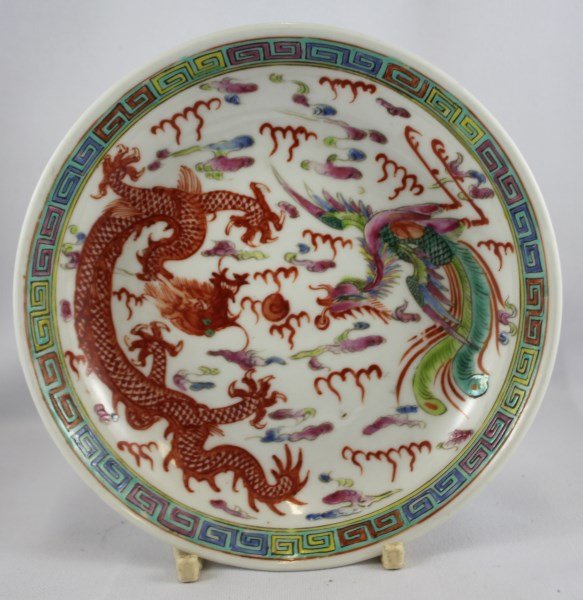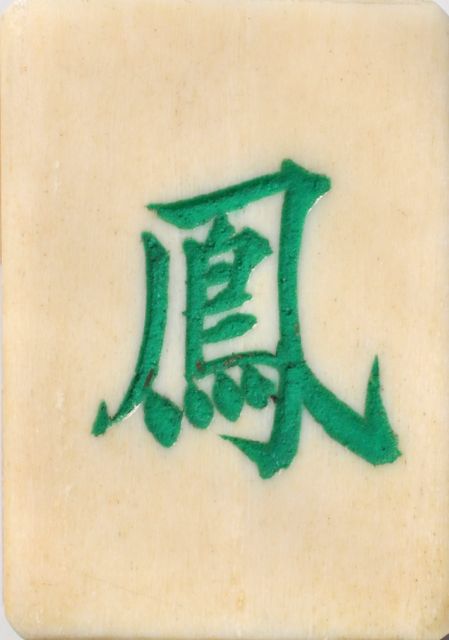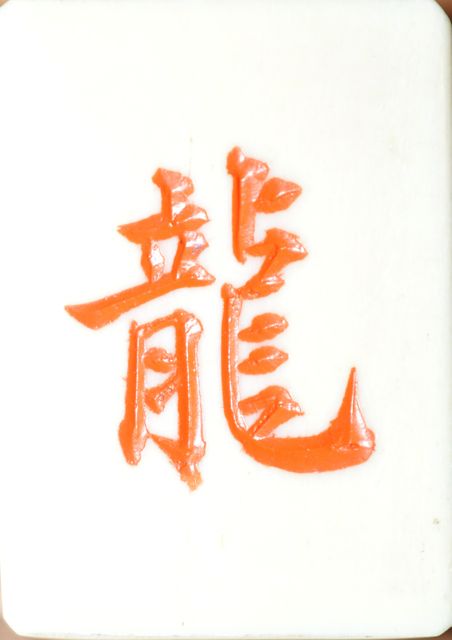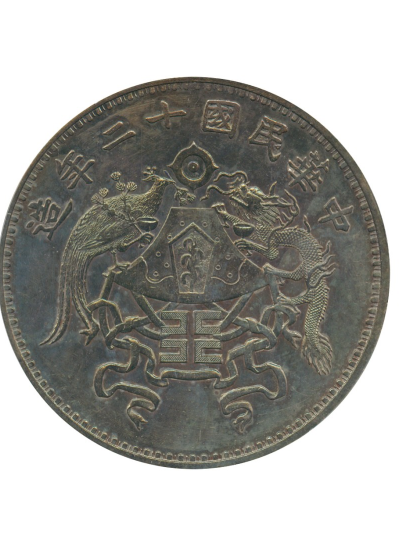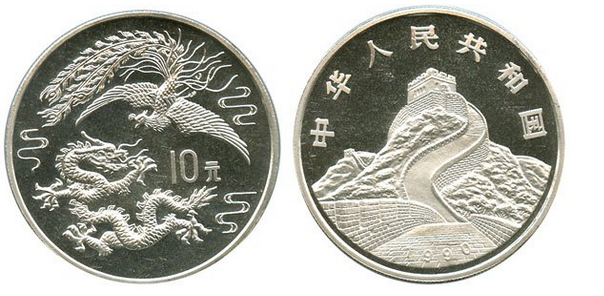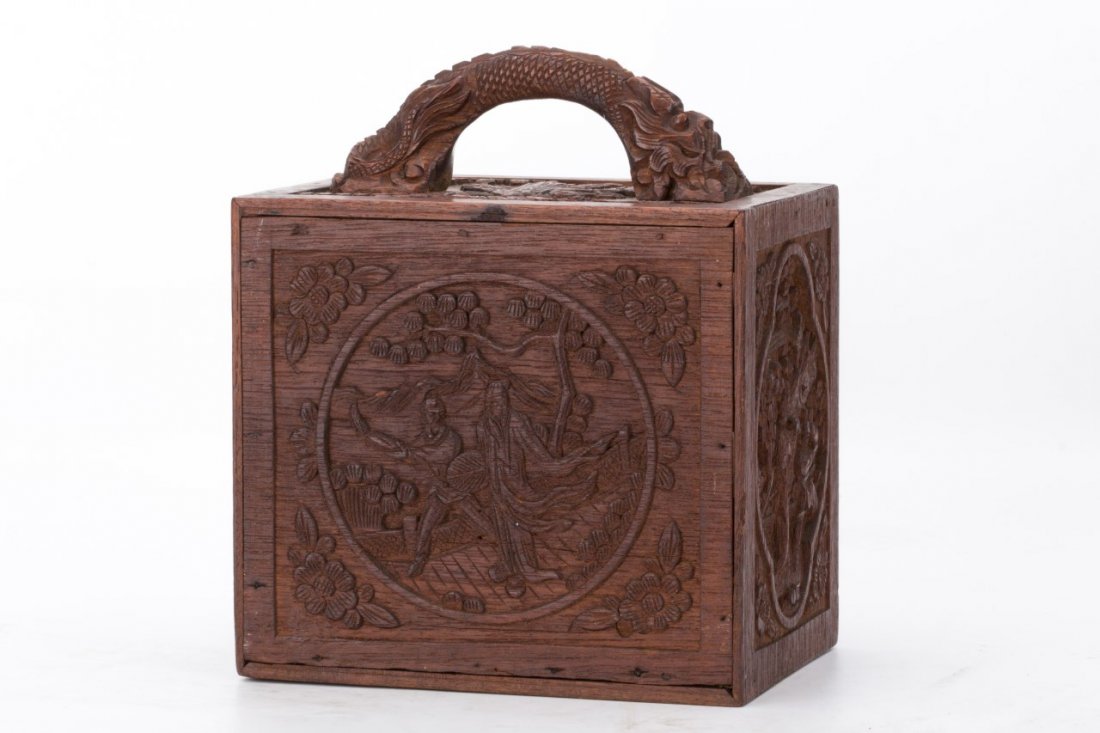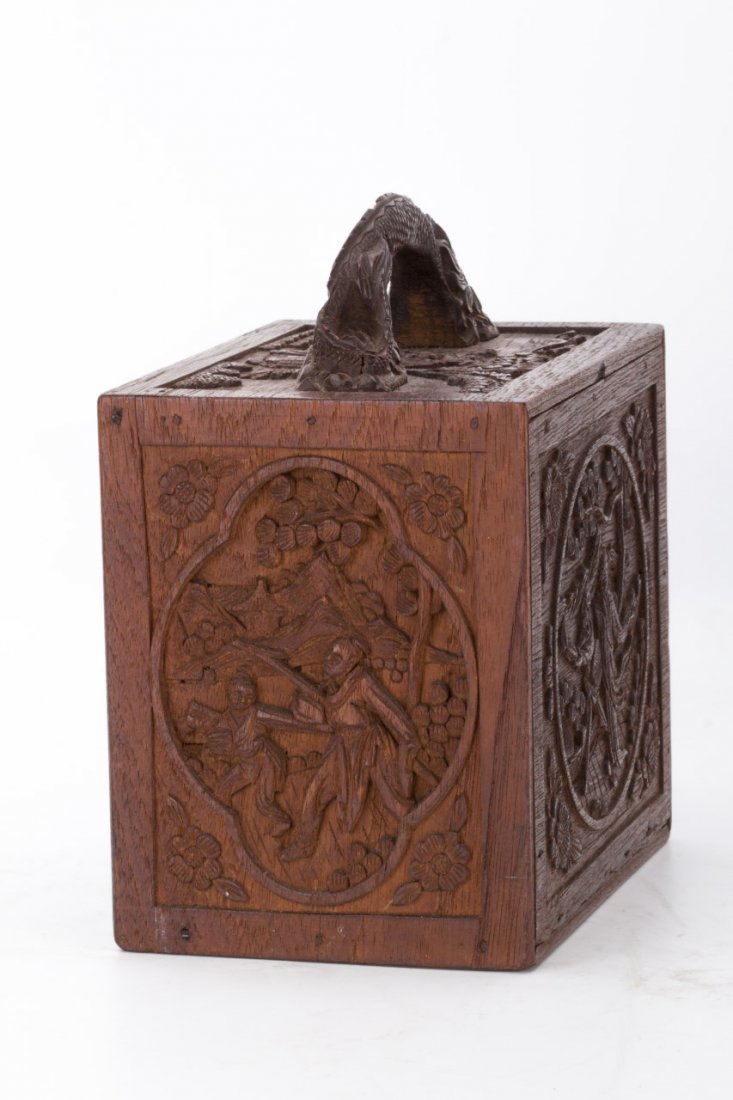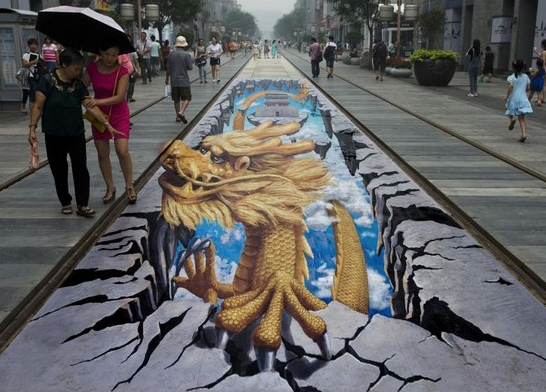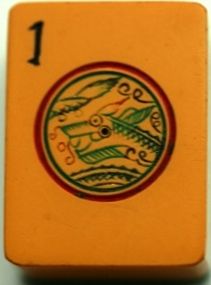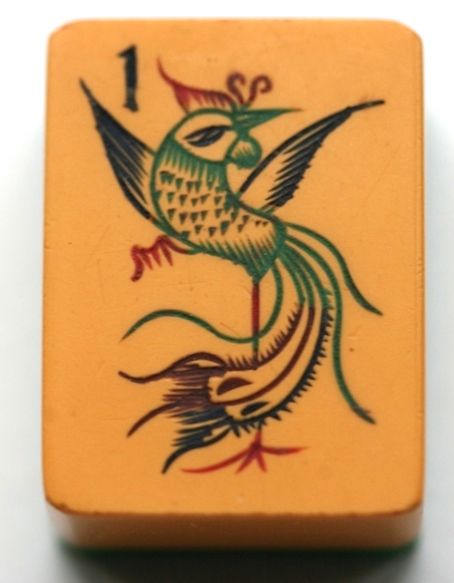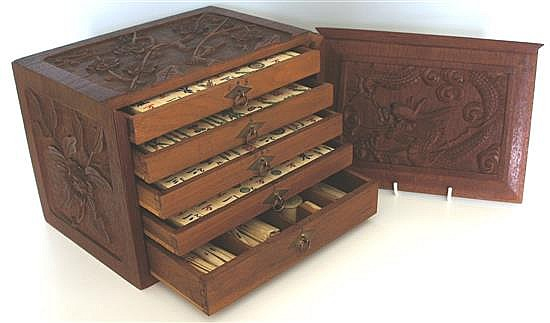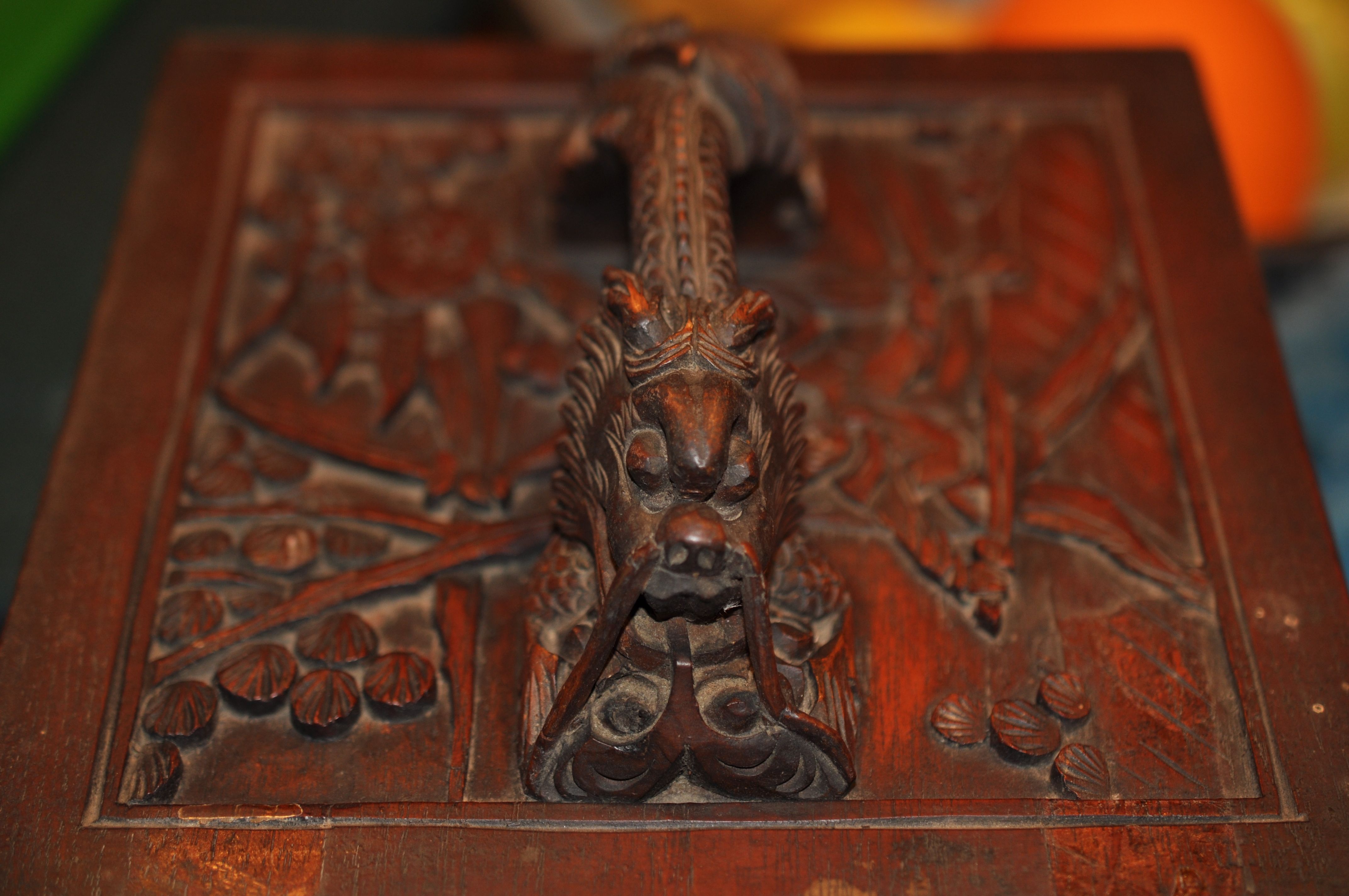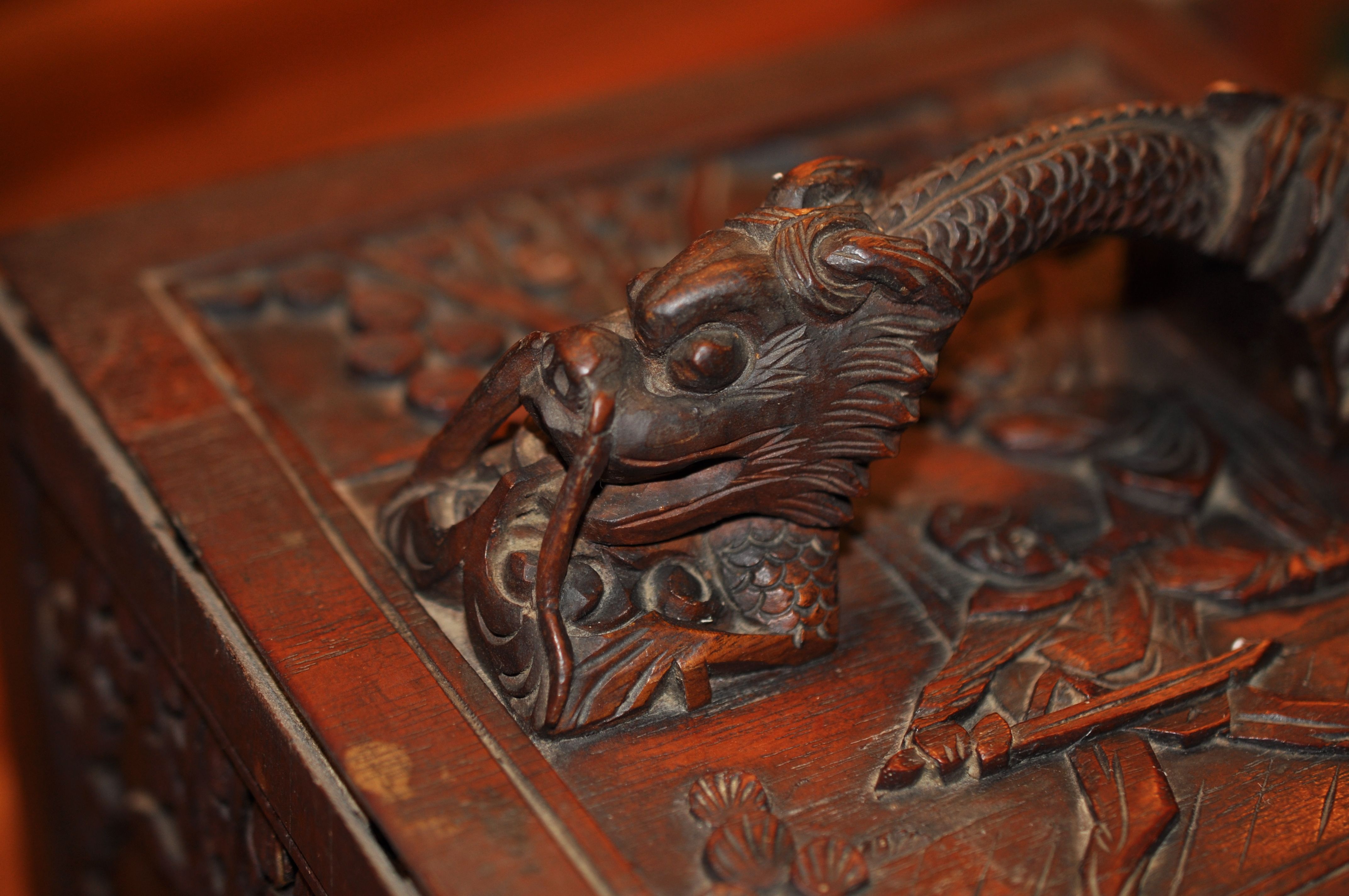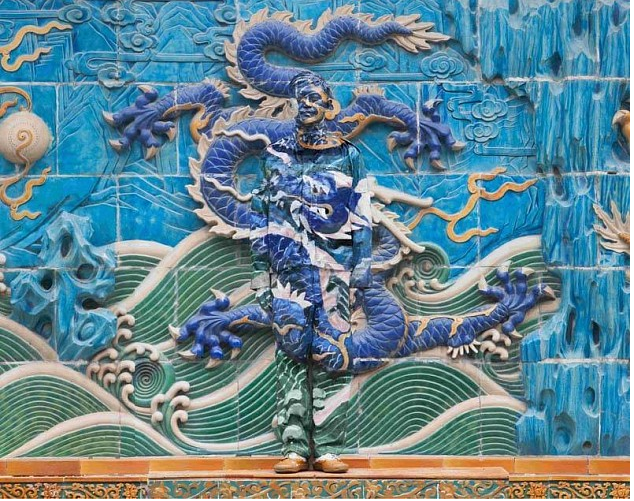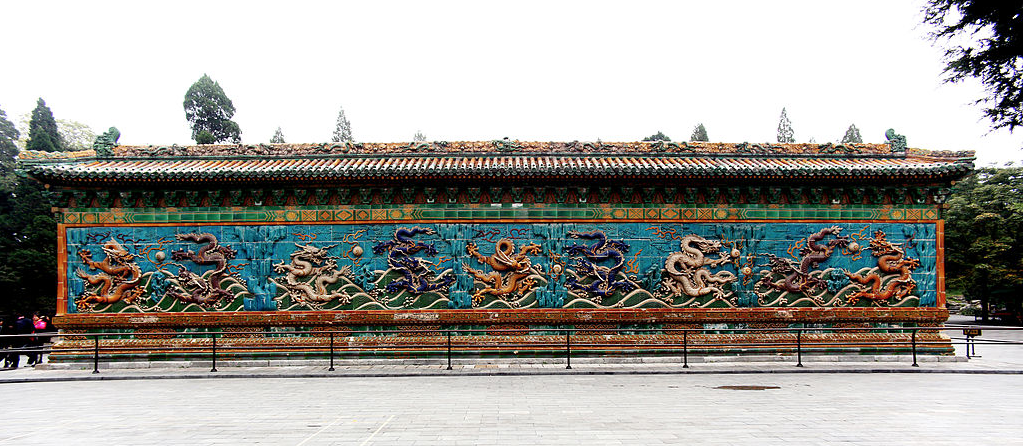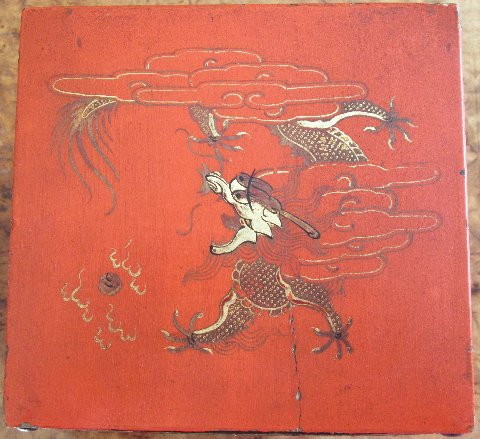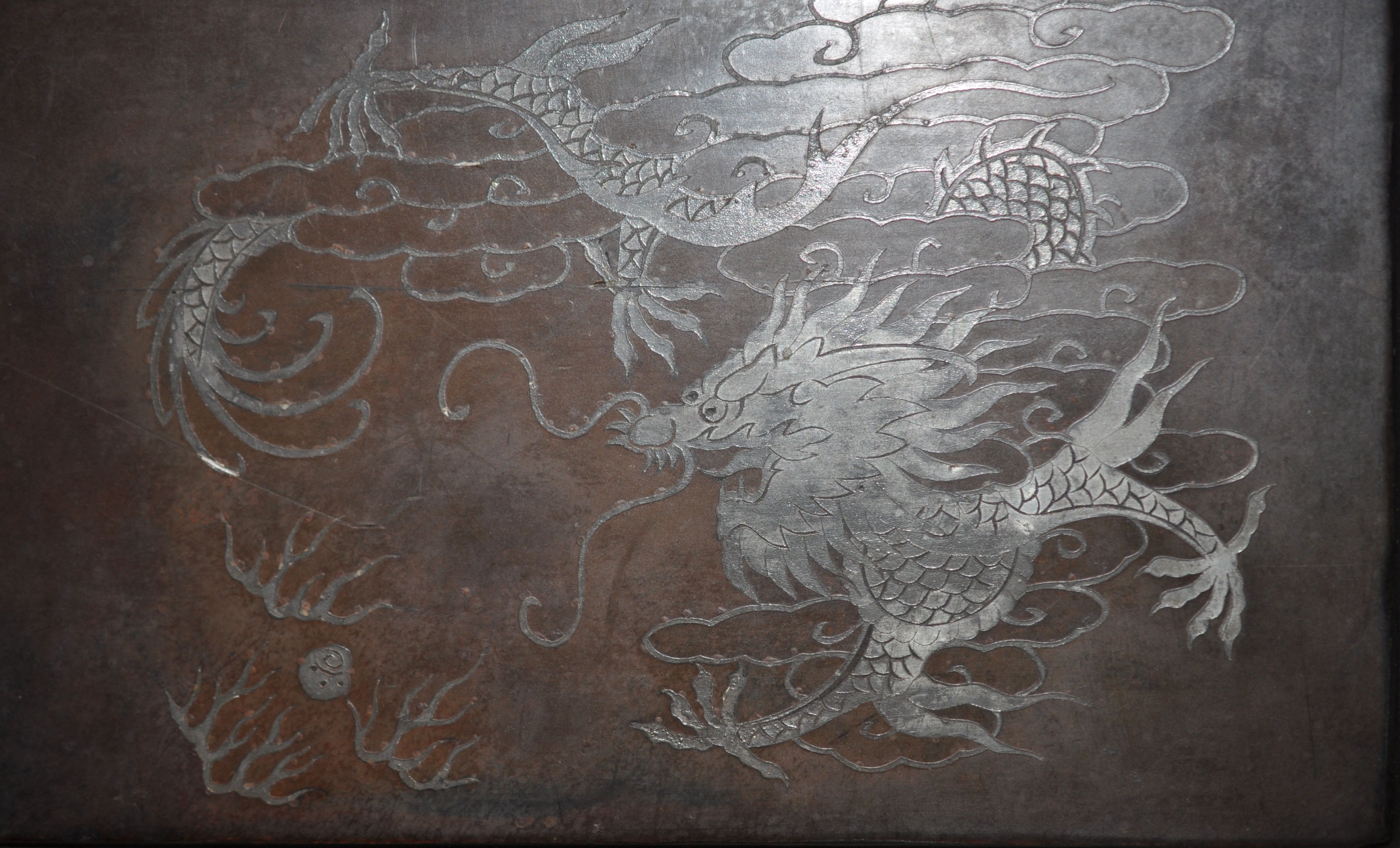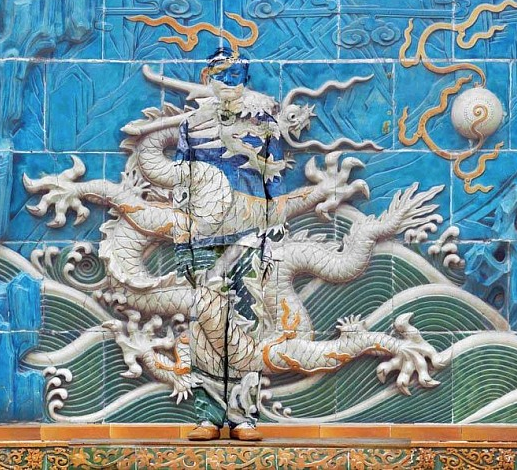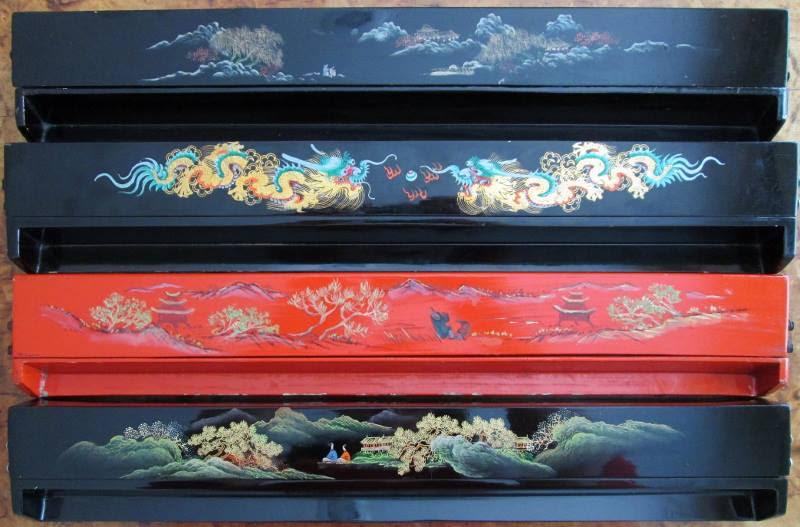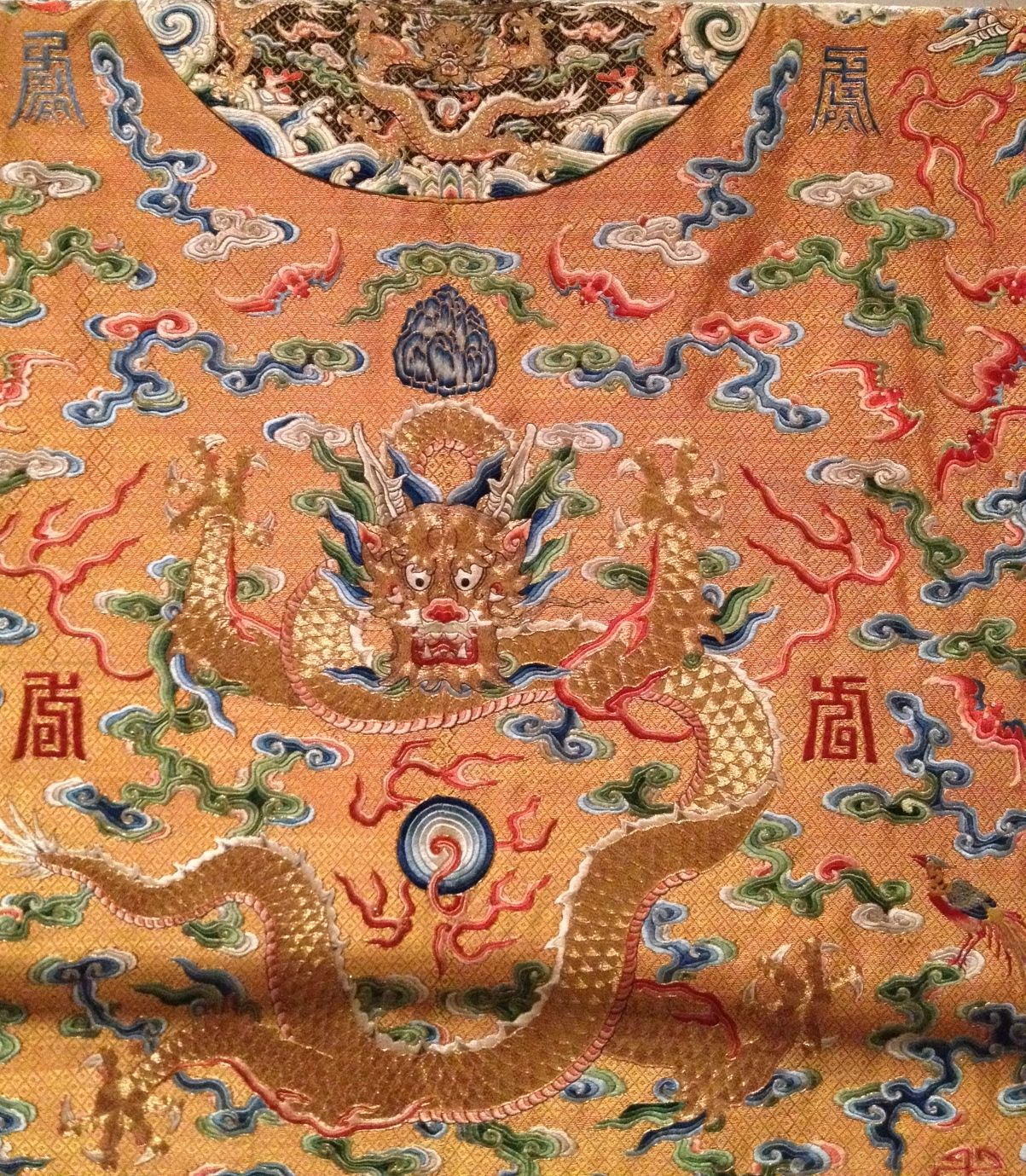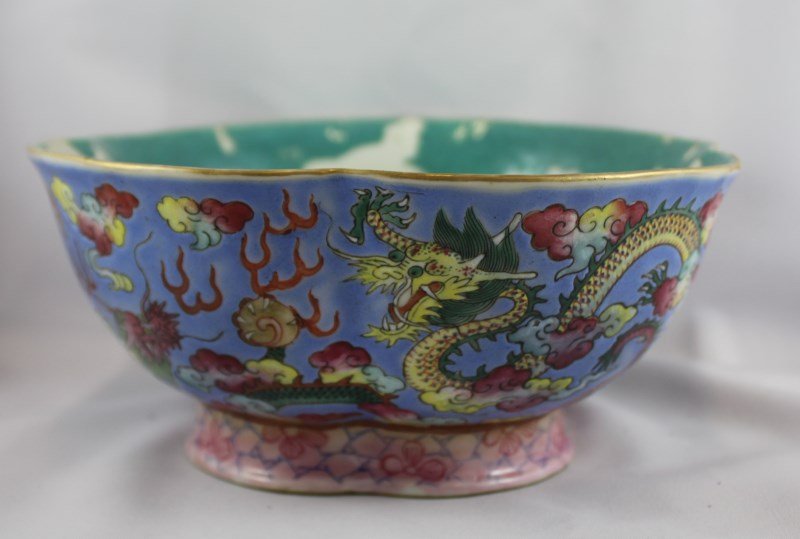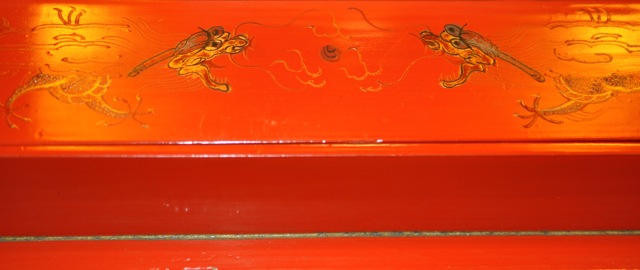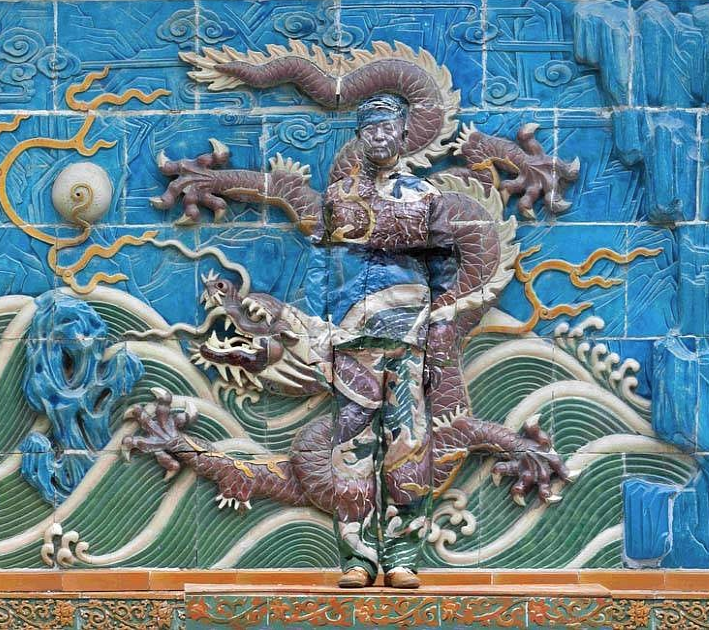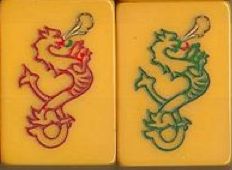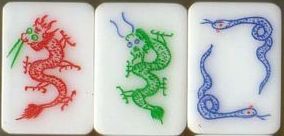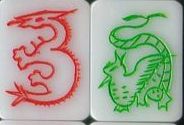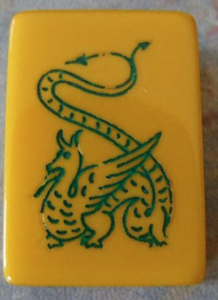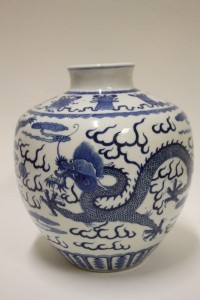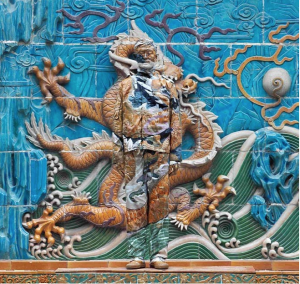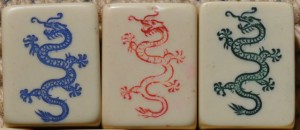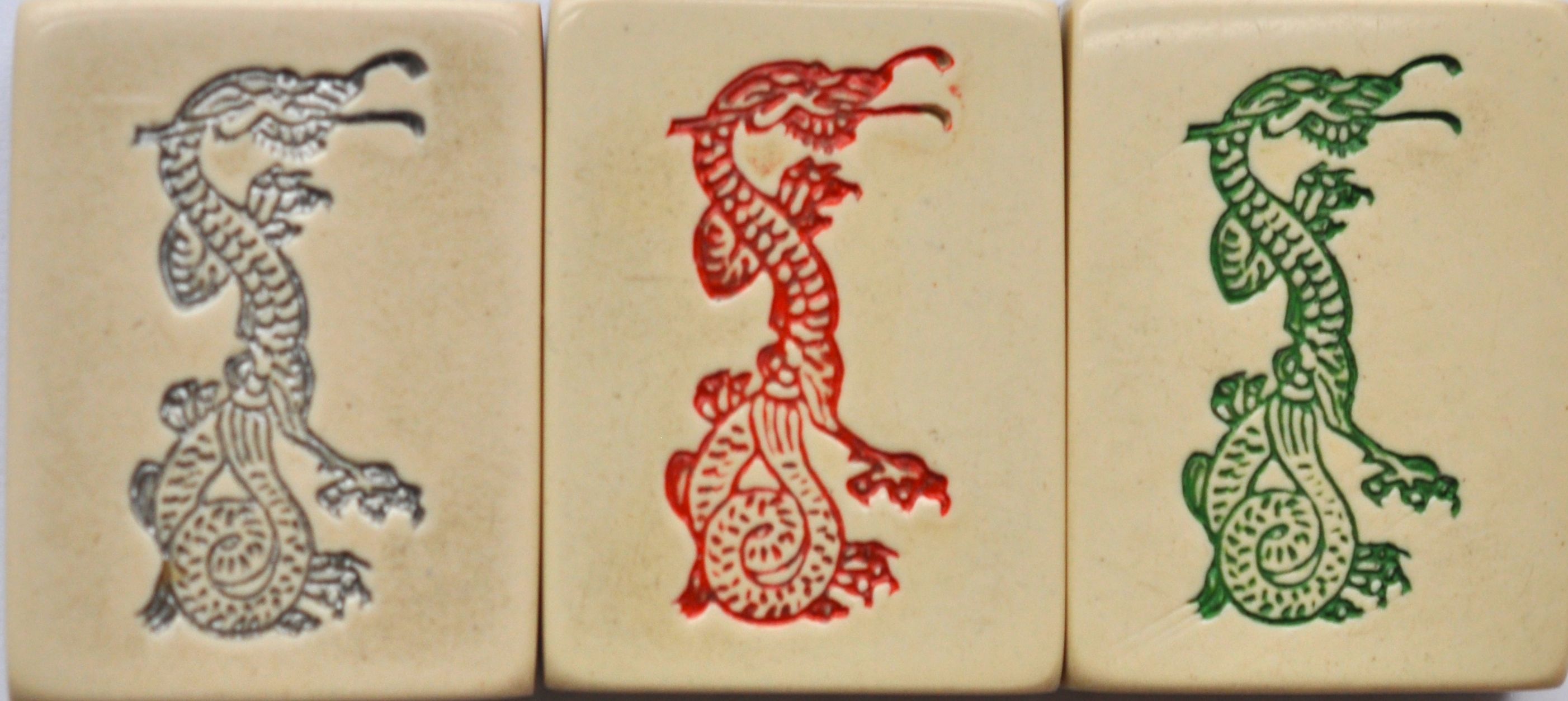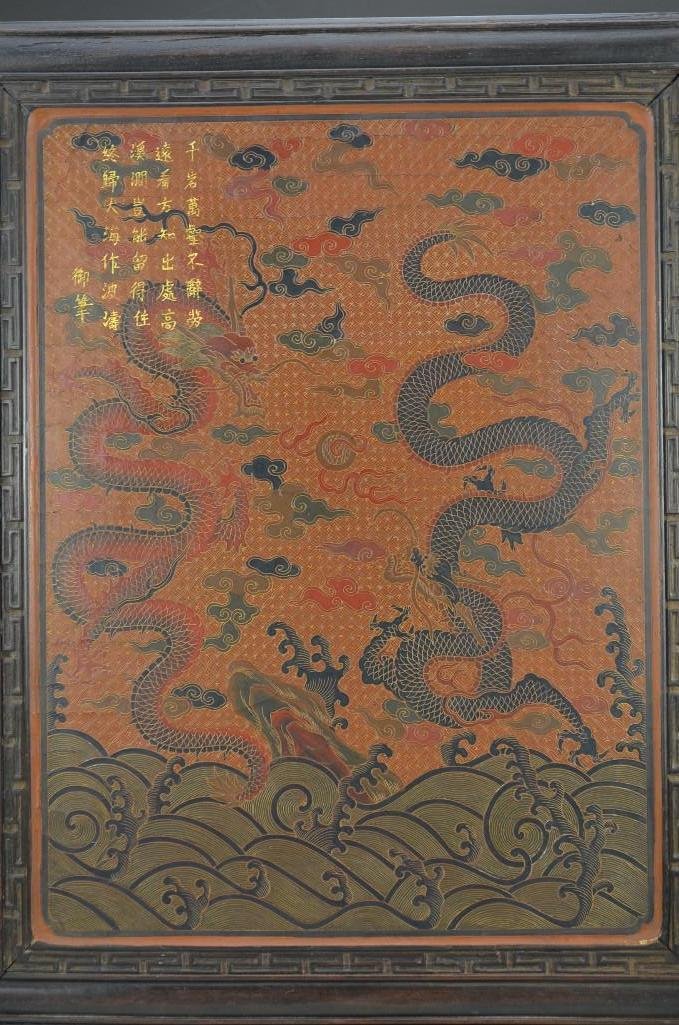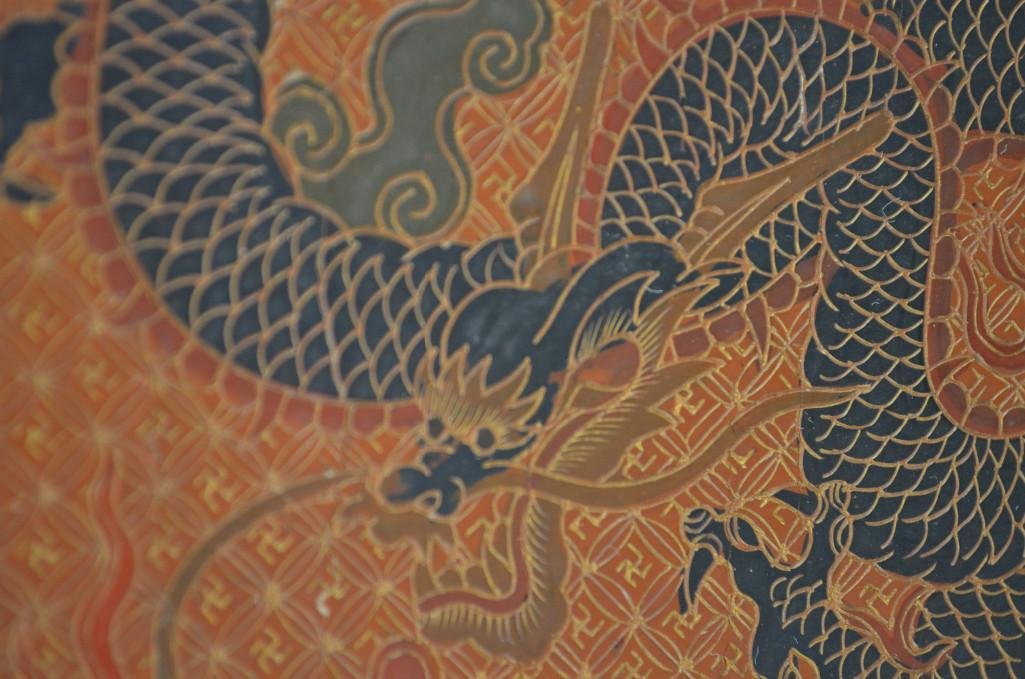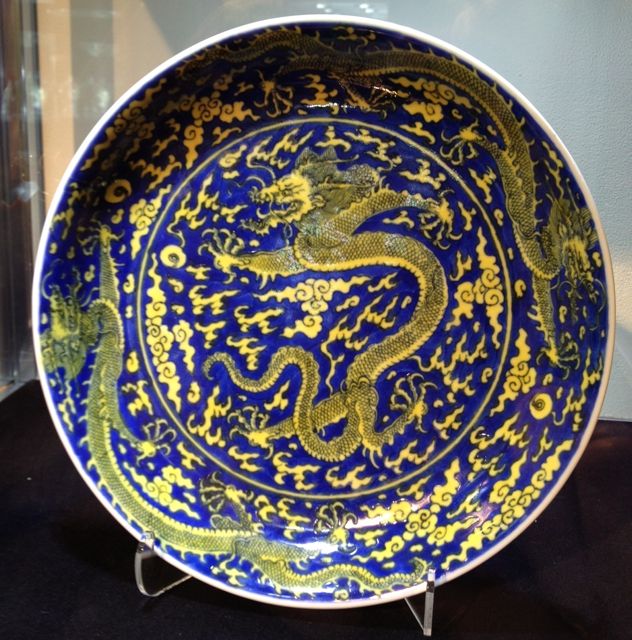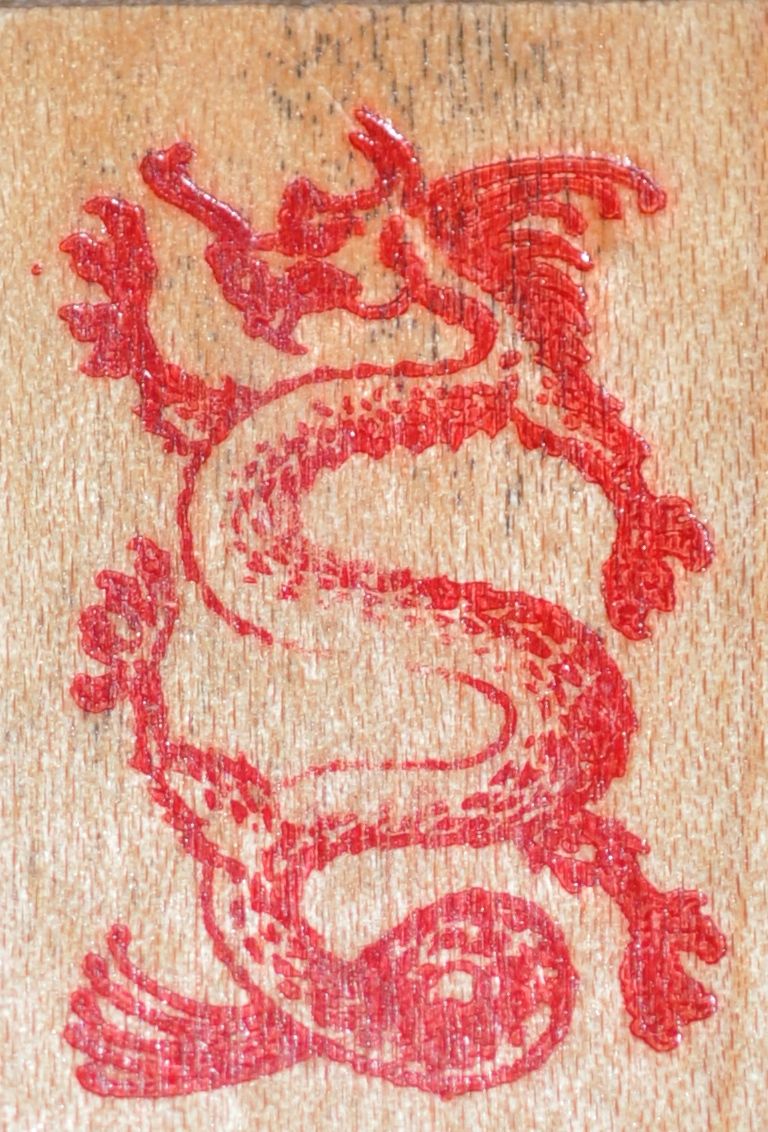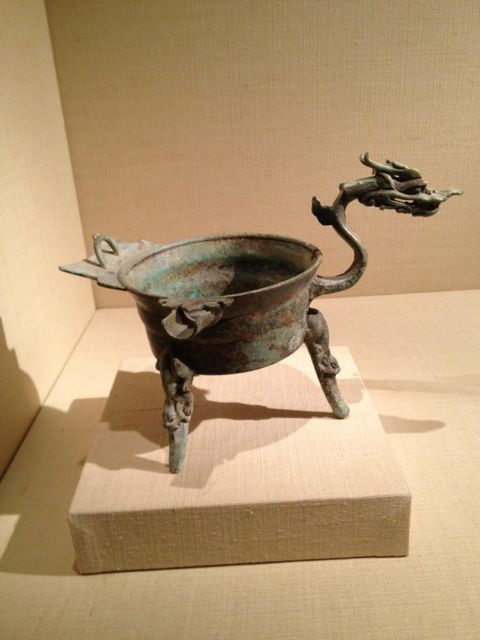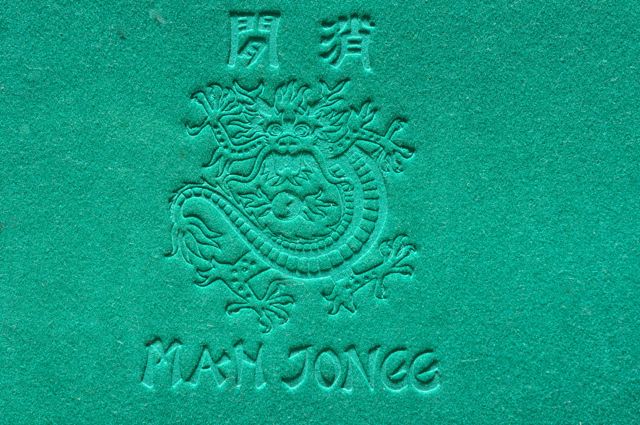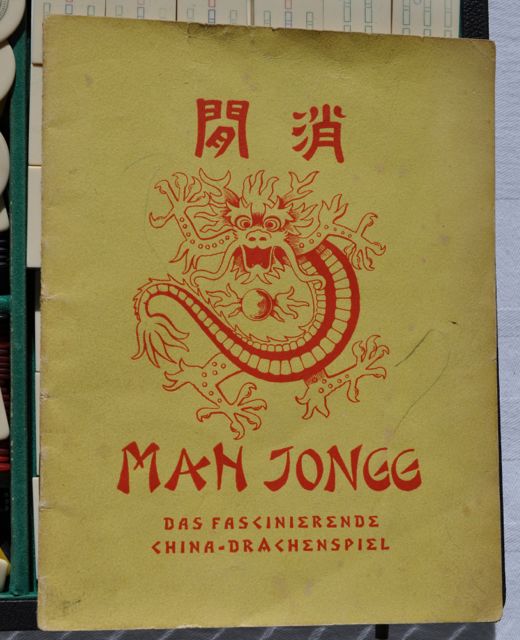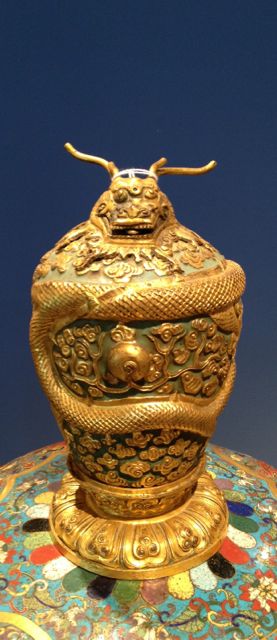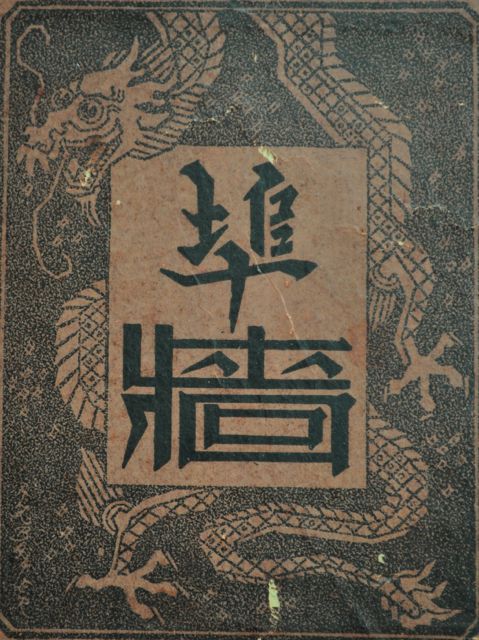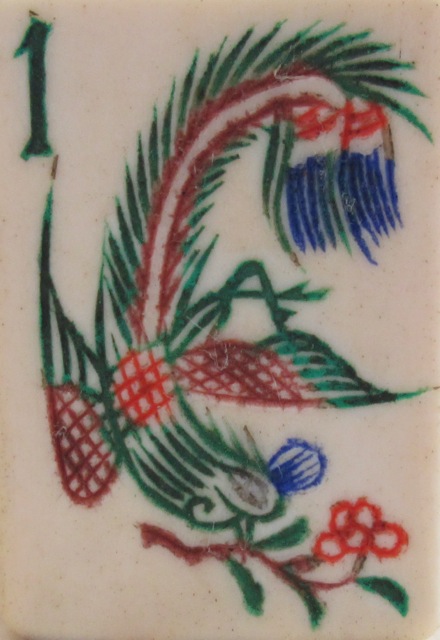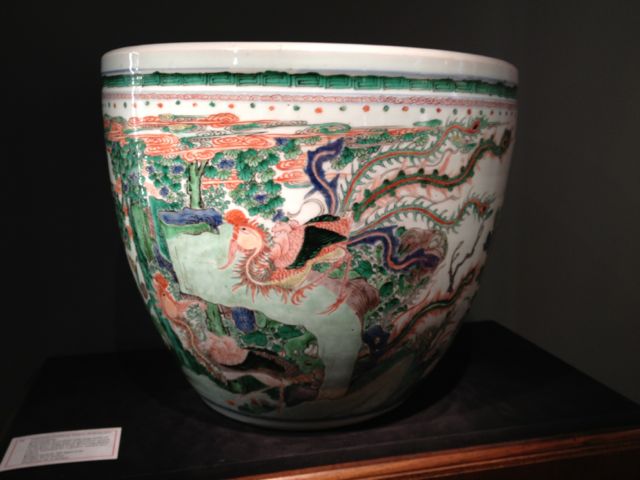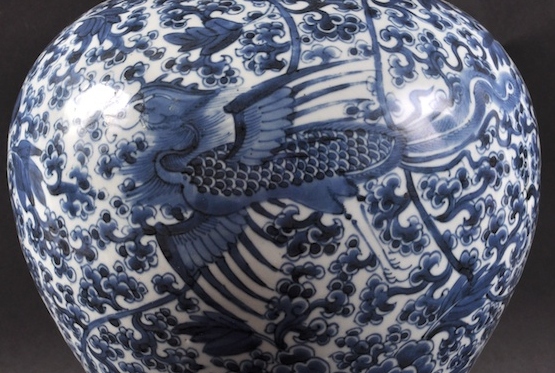The other day we had the good fortune to study photographs of a set sent to us by Bill Price. You will remember the tiles in that set are quite special: the One Bam is a phoenix and the One Dot a dragon. If any of you missed it, click here for a real treat.
The dragon and phoenix are a lucky pairing in Chinese art. When seen together, the dragon becomes male, and the phoenix female, and thus they represent good wishes for a happy marriage.
The above platter from the Lucas Collection in Australia shows the two of them, interestingly surrounding a flaming "pearl." The dragon has five toes, putting him in the category of an object that could be owned or worn by a member of the royal family; his whiskers, horns and chops are easily seen; his scales and serpentine body complete the look. The phoenix has a colorful tail and body, and the colors used make her most feminine indeed. They both have flames around them, those orange spiky squiggles. The platter is surrounded by meanders.
You will remember one of the first mahjong sets that was mass produced was made by the Mah-Jongg Sales Company of America. The Green (Dragon) actually is the symbol for phoenix but
the Red (Dragon) is the Chinese word for dragon. So even at the dawn of the game its designers felt it was beneficial to have the good omens of this pairing.
The above coin (from Baldwin's Auction House in Hong Kong) was issued in 1923, the very same year that the Mah-Jongg Sales Company really took the world by storm when it started exporting sets in big numbers to the States and elsewhere. Notice that pairing of the dragon and phoenix. The MJSA, when it used that pairing on its "Dragons" was probably hoping to create a happy marriage between the Mah-Jongg Sales Company and the players using its sets, rules and scoring system.
The good fortune of the pairing continues today. Here are two sides of the same coin, of recent minting. You see the pairing of the dragon and phoenix on the left and that other, all important symbol of China, the Great Wall. Given that the dragon is associated with power and the ruler of China, and the Great Wall certainly represents strength, it is not surprising to find these two symbols on the same coin. Don't forget the phoenix only appears in times of a just ruler, so we have a lot of important symbolism on one coin.
Our reader Katherine Hartman has found the ornate boxes seen above that she uses to house Mahjong sets. You will note the phoenix on the top of the box, and dragons surrounding the sides. As many of you already know, very few boxes were made expressly for Mahjong tiles in the early days of the game; rather other boxes had to be adapted. Some of you probably have to do that these days yourselves, when faced with the sad deterioration of some vintage and antique boxes, so the tradition of adapting boxes for new uses exists today. And should you find boxes that have the wonderful dragon and phoenix pairing, the tiles will have a happy home indeed.

